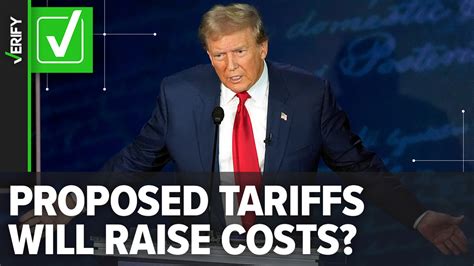In the realm of international trade, where tariffs are the new buzzword and economic strategies dictate global transactions, a significant shift has been observed. The repercussions of Trump’s tariff policies have prompted a notable trend: an upsurge in imports finding sanctuary within US foreign trade zones. This phenomenon has piqued the interest of economists, trade analysts, and business enthusiasts alike.
Understanding US Foreign Trade Zones
US foreign trade zones, also known as free-trade zones, are designated areas within the country that operate under different regulations from the rest of the nation. These zones offer various benefits to businesses looking to import goods without immediately paying duties or tariffs. In essence, they serve as gateways for international trade while providing cost-saving opportunities for companies.
The Trump Tariff Effect
The imposition of tariffs by President Trump on numerous imported goods has sparked a chain reaction in the global market. As countries retaliate with their tariffs or seek alternative routes to avoid excessive charges, some businesses have turned to US foreign trade zones as a strategic solution. By utilizing these zones, companies can defer tariff payments until their products leave the zone for domestic consumption.
Expert Insights:
Analysts suggest that this surge in imports into US foreign trade zones is not merely a short-term workaround but rather a calculated strategy employed by businesses to navigate the complexities of current international trade dynamics. By leveraging these zones effectively, companies can mitigate financial risks associated with fluctuating tariff rates and uncertain trading conditions.
Benefits Galore
The allure of US foreign trade zones lies in their abundant benefits for importers and exporters alike:
1. **Duty Deferral:** Importers can postpone duty payments until goods are moved out of the zone.
2. **Duty Elimination:** Goods re-exported from these zones are often exempt from duties altogether.
3. **Inverted Tariffs:** Some products processed within these zones may benefit from lower duty rates.
4. **Customs Efficiency:** Streamlined customs procedures speed up processing times for shipments.
By capitalizing on these advantages, businesses can optimize their supply chains and enhance competitiveness in the global marketplace.
A Strategic Shift
As more companies pivot towards using US foreign trade zones as part of their operational strategies, it underscores a broader transformation in how businesses adapt to evolving economic landscapes. The traditional norms of direct exports and imports are being reshaped by innovative approaches aimed at maximizing efficiency and minimizing costs amidst turbulent trade conditions.
Through this lens, it becomes evident that what initially seems like a circumstantial response to political decisions unfolds into a strategic maneuver that could redefine how international commerce is conducted in an era marked by uncertainty and volatility.
In conclusion, the influx of imports into US foreign trade zones catalyzed by Trump’s tariffs signifies not just a temporary diversion but a fundamental realignment in how businesses engage with global markets. As stakeholders continue to navigate shifting tides in international trade policies and practices, adaptation remains key to thriving amidst change and uncertainty.









Leave feedback about this